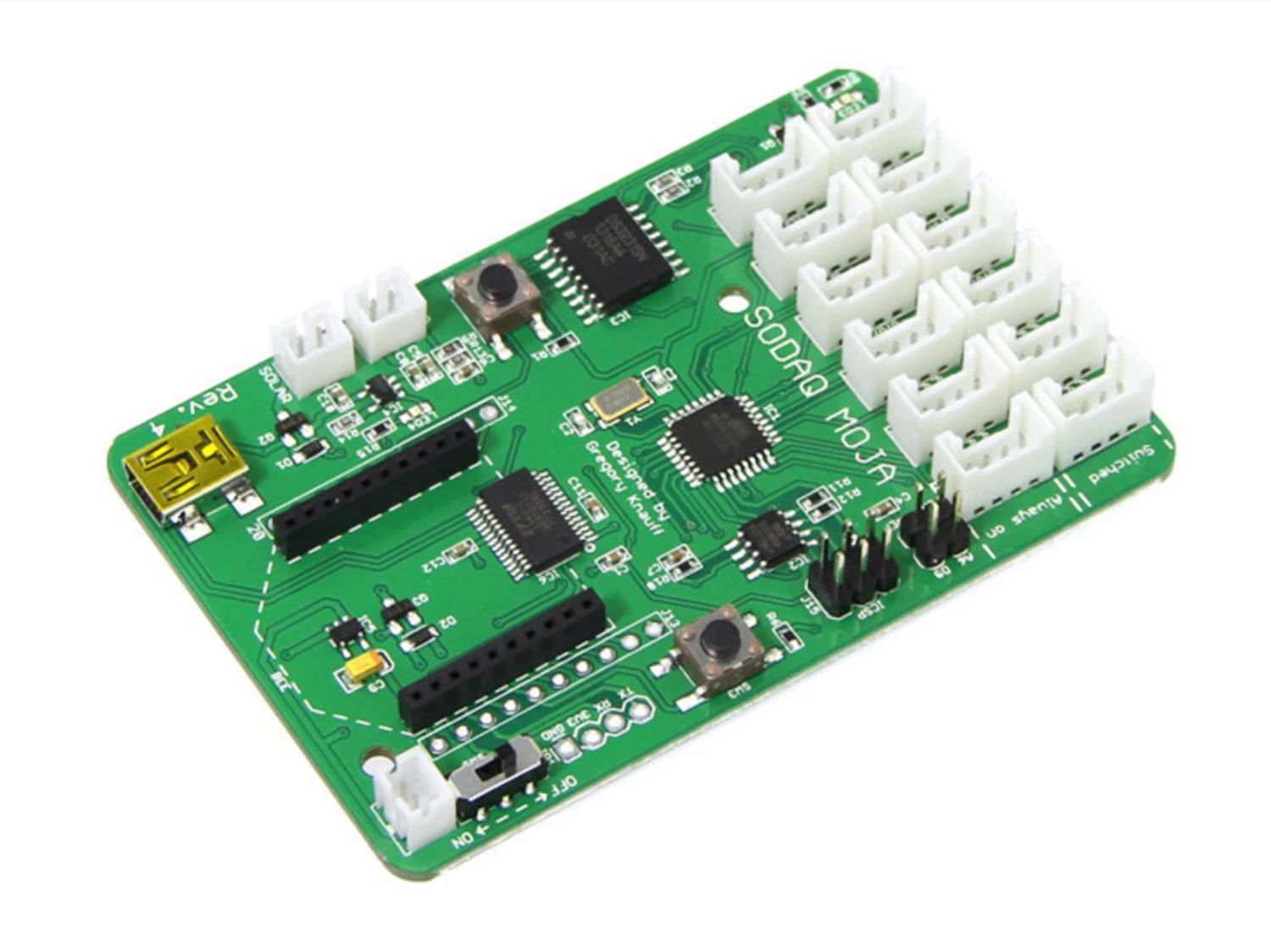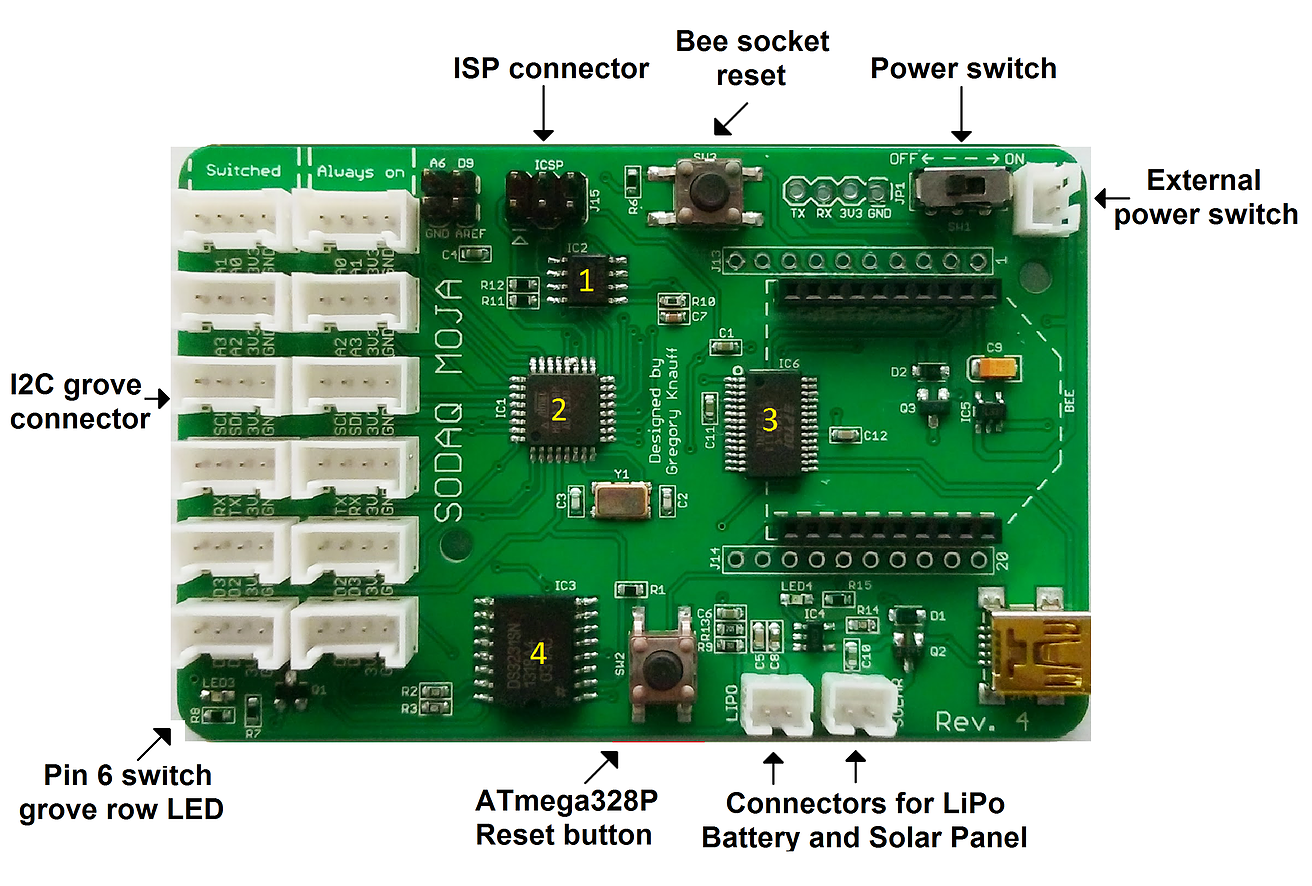Moja¶

Overview¶
This is the first SODAQ board ever made!
The Moja is discontinued.
The Mbili is the upgraded version of the Moja, you can buy it in our shop.
Getting Started¶
Follow the getting started guide to verify you use the correct URL and update your boardfiles to the latest version.
Switching the board on¶
The only switch on the SODAQ Moja board is an on/off switch. In off state the solar charge circuit is still active and the real-time clock is still powered. Make sure that also when programming the board the switch is in the ON position. Next to the switch there is a two pin header for an external on/off switch. If you want to use the external on/off switch make sure the switch is in off state.
Windows 7 and 8 normally find the right USB driver when you plug in the Moja for the first time. The same is true for Mac and Linux.If your system doesn’t find the driver you will have to download the FTDI from:
https://www.ftdichip.com/Drivers/VCP.htm
The FTDI driver adds a communication port. In Windows this is COMx (so COM1, COM 8, etc.). On Linux and Mac the port name starts with /dev/tty..
The SODAQ board can be programmed with the Arduino IDE. The latest version of Arduino IDE can be found at www.arduino.cc. The SODAQ board is tested with Arduino IDE version 1.0.5. Before you can program the SODAQ you have to select the right board and port settings. You can select the board by going to Tools > Board > Arduino Pro or Pro Mini(3.3V, 8 MHz)w/ATmega328.
Boardfiles¶
Features¶
- Atmega Microcontroller running at 3.3V and 8MHz
- Arduino Compatible
- Power supply by LiPo battery (3.7V) or USB cable
- Solar charge controller with JST connector for Solar Panel up to 2.5W
- Battery Monitor
- DS3231 Real Time Clock and Temperature sensor, clock backup powered by LiPo battery
- 8 MBit data flash module (AT45DB)
- Micro USB connector
- 12 Grove connectors connecting Digital, Analog and I2C pins
- On/Off switch. With the switch in Off position the solar charge circuit is still active and the RTC clock is still powered.
- ICSP programming header
- Bee socket for Xbee, GPRSbee or other bee style modules
Pinout¶

- Flash memory (AT45DB161E)
- Microcontroller (ATmega328P)
- FTDI chip (FT232RL)
- Real-time clock (DS3231)
Pin definitions¶
LED1 ?
LED2 ?
LED3 ?
LED4 ?
Grove Sockets¶
The SODAQ board has two rows of grove connectors. They both contain the same I/O pins but one row can be turned on/off in software. The switched row can be used to reduce the energy consumption of some sensors. Make sure the maximum current of all sensors in the switched row is not greater then 115 mA. The switching of this row is done by actually switching the ground connection on/off. Therefore if you are using the switched row with a cable, make sure you are not using any other ground connection then this cable. Otherwise the switching will not have effect and the attached device will always be powered.